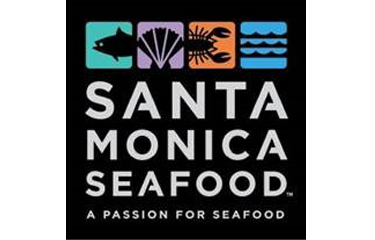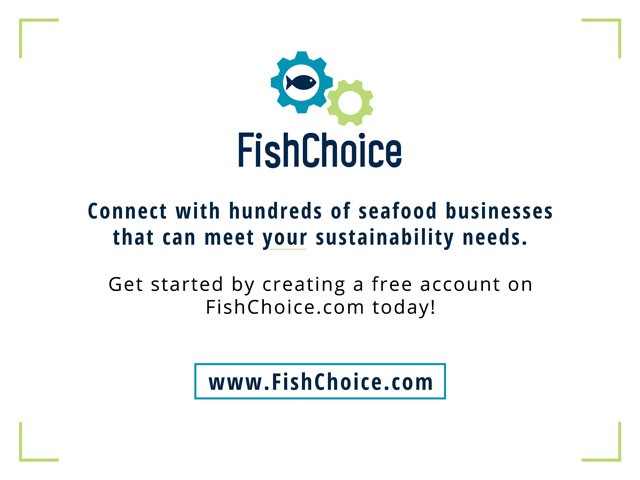Santa Monica Seafood is featured in The Top 25: Sustainability & Conservation list, published by SeafoodSource on 24 September, 2020.
SeafoodSource: What kind of trends have informed Santa Monica Seafood’s latest sustainability/conservation efforts?
Santa Monica: Santa Monica Seafood sustainability/conservation efforts are constantly evolving to address changing consumer concerns. IUU and unacceptable labor practices are top of list right now and particularly challenging to address throughout our diverse and often distant supply chain. We are currently focusing on traceability, Chain of Custody (COC) certifications, and Supplier Code of Conduct (SCOC) standards to improve our supply chain integrity with respect to these issues.
Traceability – We have participated in the GDST KDE working group since its inception, three years ago; formally endorsed the finalized GDST 1.0 standards this year; and just this week participated as a GDST panelist in the Seafood 2030 Sustainability Forum. We continue development on our own technical solutions to upstream traceability and Trace Register implementation.
COC Certifications – Santa Monica Seafood was the first West Coast seafood distributor to become Marine Stewardship Council (MSC) Chain of Custody (COC) certified back in 2007, have since become Aquaculture Stewardship Council (ASC) and Best Aquaculture Practices (BAP) certified, and just this month added the Alaskan RFM COC certification. We are a GSSI member and engaged in the incorporation of labor rights into all standards.
Santa Monica Seafood is an Asian Seafood Improvement Collaborative (ASIC) board member. Not all small fishers and farmers are of the scale to afford major certifications and maybe disenfranchised from markets without them. ASIC serves to engage producers and stakeholders directly and inclusively in building collaboration that accounts for the social, environmental, traceability and market access challenges facing the region.
SCOC - We require all suppliers to acknowledge and agree to our Supplier Code of Conduct, annually. Improving traceability, COC certifications, and SCOC standards are integral to resource sustainability, conservation, product integrity, and transparency with our customers.
SeafoodSource: What key features serve to set Santa Monica Seafood’s sustainable seafood offerings apart in the market?
Santa Monica: Transparency, product expertise and line of sight purchasing are integral to what sets us apart. We have a deep understanding of our products, where they come from, how they are caught or farmed and who processed them because we make the effort to attend and participate in industry conferences and visit domestic and international locations regularly.
The knowledge gained enables us to accurately gather the key data elements needed to qualify our products on the spectrum of sustainability providing metrics that our customer can see on their invoice as a responsible sourcing score (similar a GPA) and which empowers them in their decision-making processes. This information also enables us to provide purchasing history to customers through their NGO consultants which is used to verify their progress towards measurable time-bound, public-facing sustainability commitments.
SeafoodSource: How does sustainability factor into your overall mission and strategy as a business?
Santa Monica: Part of our mission is to be the most trusted seafood supplier in the Southwest. We want our customers to leave their concerns up to us, buy with confidence and simply enjoy their seafood. Critical to delivering on this is our reliance on a stable, clean, and diverse supply; processed, packaged, and distributed in an environmentally-responsible way.
Santa Monica Seafood was founded over 80 years ago by emigrant Mediterranean fishermen displaced by overfishing. Our experience relying on globally shared resources since then and over four generations of family members takes resource sustainability beyond a strategy to a necessity. An embedded necessity that requires our active engagement throughout our supply chain and across all players in our industry. We must be a model; we must influence as well as invest.
At the same time, we must be good stewards and minimize the negative impacts our operations have on the environment from packaging, chemical use, waste, energy, discharge, by-products to recycling and sustainable sourcing. Santa Monica Seafood was the second seafood company in the U.S. to become ISO14001 Environmental Management Systems certified 10 years ago. ISO14001 serves as our road map to constant improvement in all areas of operation.
As an example, Santa Monica Seafood has played a leadership role in pre-packaged chilled seafood to eliminate waste, improve quality, consumption, and food safety. We have used recyclable #1 mono PET plastic trays for years, but oxygen permeable recyclable top films just did not exist, until this year when one of our divisions together with MULTIVAC concluded a two-year effort that developed a breathable, recycled/recyclable #1 PET top film for our retail case ready products.
SeafoodSource: How does Santa Monica Seafood approach sustainable, responsible development?
Santa Monica: Santa Monica Seafood embraces the Conservation Alliance for Seafood Solutions’ Common Vision. Our place in the mid-supply chain uniquely positions us to influence customers and suppliers, up and down the chain. As already mentioned, we collect data on our products to make informed sourcing decisions ourselves and to educate our customers toward better choices.
Even more importantly, we engage upstream with our suppliers and all areas of seafood production, from fishery management and governments to certification standards and improvement plans. Santa Monica Seafood started the Responsible Sourcing Program (RSP), which has granted over USD 1 million dollars towards dozens of development projects including stock assessments, gear innovations, wild stock enhancement, ghost gear removal, and at-sea cell phone data capture and tracking software for artisanal fishermen. Many of these projects are local like the Oceanside based, PIER deep set sword buoy development program.
This RSP program became the model for Sea Pact, a group of 10 like-minded US and Canadian seafood distributors striving to increase the number of sustainable fisheries globally and the expansion of Aquaculture as the most efficient and sustainable protein production system to meet the world’s rapidly rising population. Collectively, Sea Pact is the 5th largest buyer in North America and the 14th largest in the world.








